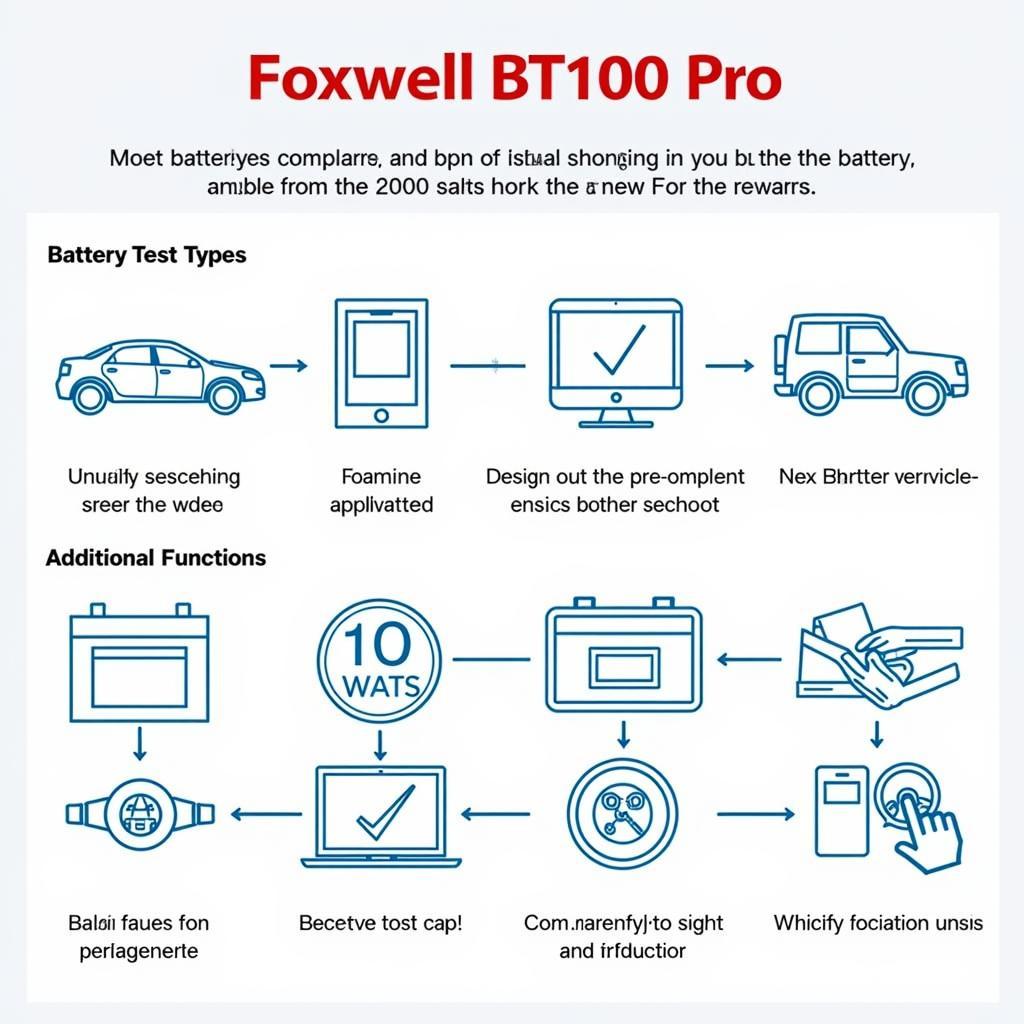Troubleshooting car problems often feels like navigating a maze blindfolded. You know something’s wrong, but deciphering those cryptic error codes can be a real head-scratcher. That’s where a powerful OBD2 scanner like the Foxwell NT301 comes in handy. This guide will walk you through the precise steps on how to clear codes using Foxwell NT301, empowering you to take control of your vehicle’s diagnostics.
Understanding the Importance of Clearing Codes
Before we dive into the how-to, let’s briefly understand why clearing codes is essential. When your car’s computer (ECU) detects an issue, it logs a corresponding error code. While this is incredibly helpful for diagnosing problems, simply fixing the underlying issue doesn’t automatically erase the code. This can lead to:
- False positives: A lingering code might trigger your check engine light even after the problem is resolved.
- Diagnostic confusion: Old codes can clutter the system, making it harder to pinpoint new issues.
Therefore, clearing codes after a repair helps ensure accurate diagnostics and peace of mind.
Steps to Clear Codes Using Foxwell NT301
Follow these straightforward steps to erase those pesky error codes:
-
Connect the Foxwell NT301: Locate your vehicle’s OBD2 port (usually under the dashboard, driver’s side). Plug in the NT301 scanner.
-
Turn on the ignition: Switch your car to the “on” position but don’t start the engine. This powers up the scanner and allows it to communicate with your car’s computer.
-
Select your vehicle: The NT301 may automatically detect your car’s make and model. If not, navigate through the menus to input this information manually.
-
Enter the “Diagnostic” menu: The exact wording may vary slightly depending on the scanner’s software version, but you’re looking for the option that allows you to read and clear codes.
-
Choose “Read Codes”: Before clearing anything, it’s crucial to know what you’re dealing with. This step displays all stored error codes. Note them down or take a picture for reference.
-
Select “Clear Codes”: Once you’ve noted the codes, navigate to the “Clear Codes” or “Erase Codes” option. The scanner will then communicate with your ECU, erasing the stored trouble codes.
-
Verify the process: After the clearing process, it’s recommended to select “Read Codes” again. If the clearing was successful, there should be no codes displayed, or you’ll see “No Codes” message.
Additional Tips and Considerations
- Addressing the Root Cause: While clearing codes gives you a clean slate, remember that it’s crucial to address the underlying problem that triggered the code in the first place.
- Battery Disconnect: In some cases, disconnecting your car battery for a short period (around 15-20 minutes) can also clear codes. However, using a scanner like the Foxwell NT301 is generally a more reliable method and preserves other vehicle settings.
- Check Engine Light: The check engine light should turn off after clearing codes and a successful drive cycle (driving your car under normal conditions for a certain period). If it persists, the underlying issue likely requires further attention.
Expert Insights
“Many car owners underestimate the value of a quality OBD2 scanner. The Foxwell NT301 not only empowers you to clear codes but also provides valuable data to understand your car’s health,” says Mark Stevenson, Senior Automotive Technician at ScanToolUS.
“Remember, clearing codes is just the first step. Always investigate and address the root cause of the issue to prevent recurring problems,” adds Stevenson.
Conclusion
Mastering how to clear codes using Foxwell NT301 provides you with a valuable skill to troubleshoot car problems effectively. Remember to note the codes before clearing them and always address the underlying mechanical or electrical issue.
For expert guidance or to explore a range of automotive diagnostic tools, connect with the team at ScanToolUS. Contact us at +1 (641) 206-8880 or visit our office at 1615 S Laramie Ave, Cicero, IL 60804, USA.


Pingback: Foxwell NT301 Clear Code: A Comprehensive Guide to Troubleshooting Car Problems - Car Scan Tool